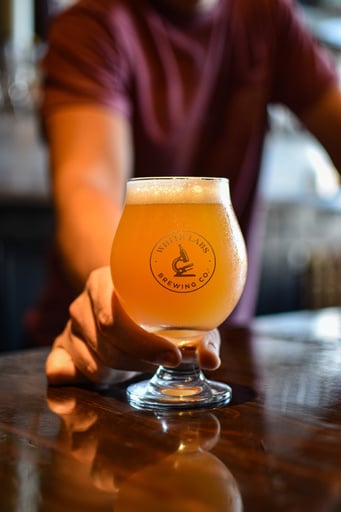The ability to effectively communicate fermentation attributes is crucial in the business of brewing. Through this technical series we want to expand on how to communicate the many flavor of fermentation by:
- Exploring ways to describe yeast-influenced flavor/aroma compounds
- Learning how yeast can manipulate other ingredients
- Different ways to establish brand identity through sensory
We will develop a comprehensive vocabulary and the ability to clearly communicate fermentation profiles to staff and customers alike. In this three part series, feel free to download our slides and watch these short videos explaining key points of fermentation.
Many Flavors of Fermentation Video Playlist
Organisms Used In Brewing
Most of brewing is mainly comprised of 2 main Brewer's Yeast. There are other organisms that can be used in brewing but these main two species are the vast majority of most beers.
Ale yeast
-
- Original brewing strain - Saccharomyces cerevisiae
Lager yeast
-
- Natural hybrid - Saccharomyces pastorianus
How To Evaluate Beer
What's the difference between tasting and drinking a beer? Have you compared a Beer to BJCP guidelines? What attributes and parameters does the yeast contribute to the beer?
- Attenuation: Measure of how completely the yeast fermented the wort, expressed as a percentage
- Flocculation: Yeast clumping together and dropping out of solution
- Flavor & Aroma Production: We will discuss these in Module 3
Things to keep in mind:
- Knowing these attributes for each strain in the brewhouse will enhance your descriptive ability
- Differentiation of similar products can be difficult, understanding the role of yeast and fermentation arms you with another tool to help distinguish them
Fermentation Attributes
What's the Difference Between Ale & Lager
What's the main difference between ale versus lager strains? Here are some key points that differentiate the two:
Ale yeast
-
- Original brewing strain - Saccharomyces cerevisiae
-
- Warmer fermentation temperatures
- Low to high ester production
Lager yeast
-
- Natural hybrid - Saccharomyces pastorianus
-
- Colder fermentation temperatures
- Character often distinguished between:
- Crisp, clean, dry
- Round, accentuated-malt, complex
- Limited strain variety
Common Wild Yeast & Bacteria
Other organisms can be used in beer as certain styles such as Mixed Fermentations, Kettle Sours, and even the growing Non-Alcoholic Beers can be created using different types of organisms.
Wild yeast
-
- Brettanomyces is commonly used
- Can ferment dextrins resulting in drier beers
- Flavor profile will vary depending on primary vs. secondary
Bacteria
-
- Used for acid production in sour beers
- Lactobacillus & Pediococcus result in lactic acid production
- Acetobacter responsible for acetic acid production
- Use of bacteria is beer-style specific
Education Is At The Core Of White Labs
Step beyond the basics and dive deep into the science of fermentation in our practical, hands-on 2-day (or 3-day!) Yeast Essentials Workshop, designed for all beverage-makers who are serious about upping their game.
Whether you're refining your yeast harvesting practices or starting a quality control program, this workshop delivers powerful tools and advanced techniques to elevate your fermentation operations!





